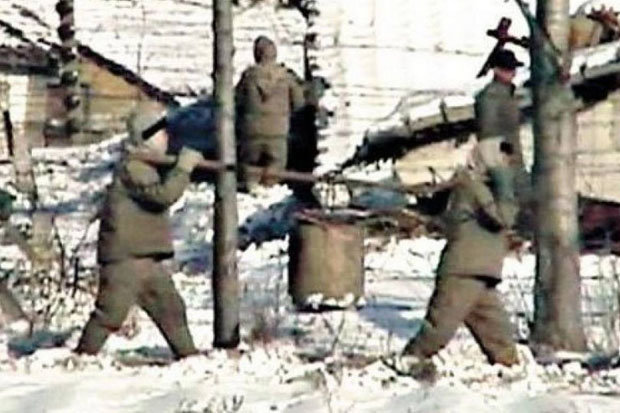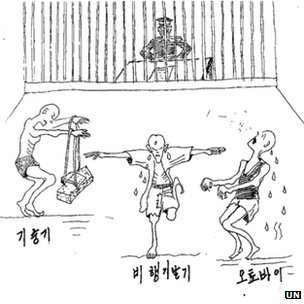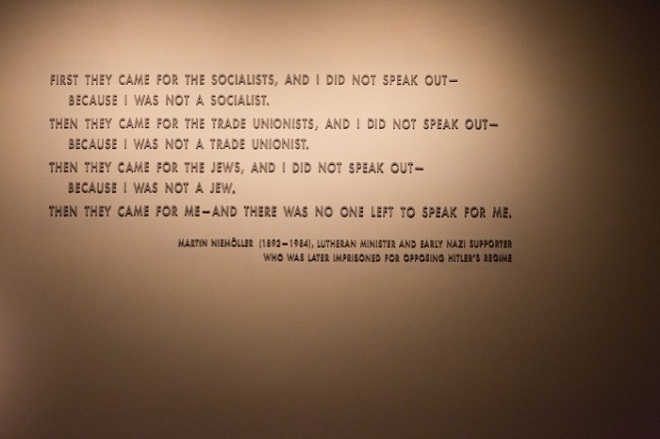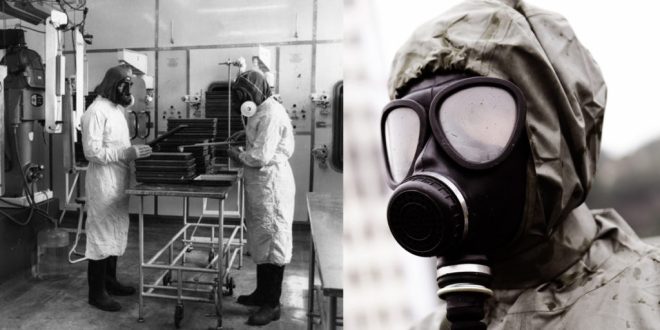
Biological warfare. It is a term that can cause widespread panic and fear at its mere intimation. However, during the Cold War both the United States and the Soviet Union produced and stockpiled huge quantities of lethal germs and toxins which were intended for use against the opposite side in the event of a full-blown war. Whilst President Nixon ended all aspects of the US biological weapons project designed exclusively for ‘offensive use’ in 1969, the Soviets continued to research, produce and subsequently genetically alter germs and toxins right up until the programme was officially dismantled in 1992. This was despite signing the Biological Weapons Convention (BWC) in 1972 – a international agreement designed to ban the production of biological agents.
Why did the Russians continue? Simple: they highly doubted that the US had any intention of upholding their end of the BWC bargain, and so continued to manufacture germ warfare in secret for decades. The results would be nothing short of catastrophic.
Soviet Biological Capability
The Soviet Bioweapons project – or ‘Biopreparat’ – was of a mammoth scale; capable of producing over 100 tonnes of weaponised bacterial agents per annum at its peak in the mid to late 1970s. Some of the diseases that were cultivated and converted into weapons include smallpox, anthrax, plague, typhus, tularaemia, Q Fever, botulism and the Marburg virus. As well as germs designed to target the human population of a country, the Soviets developed weaponised versions of bacteria that would kill ‘food animals’ (such as rinderpest, a disease that is fatal to cattle). In this way they could, if necessary, starve a country into submission during a war by decimating it’s livestock.
By all accounts there were over 50 clandestine weapons manufacturing facilities across the Soviet Union, employing around 50,000 military and civilian personnel. Safety and containment protocols were often critically inefficient, and thus it is no wonder that there were several serious containment breaches which resulted in deaths amongst the local population…and extensive government cover-ups. Whilst I will detail two of these incidents below, don’t for a second think that these are the only two such incidents. Due to the secretive nature of the Russian government it is likely that we will never know just how many times biological agents escaped from Soviet-era labs or polluted the environment due to deliberate release.
The Sverdlovsk Anthrax Incident
In 1979 inside a specially built bioweapons facility, a horrific chain of events were set in motion by a simple communication error. Inside the secret government anthrax lab, there was a drying room which was used to dehydrate anthrax spores into a fine white powder; this could then be aerosolised and used against the enemy – producing a mortality rate of 90% without treatment. On the last evening of March in 1979, a maintenance worker removed one of the filters from the exhaust chimney in order to clean it. He did so and then left a note to his superiors advising them of his actions and stating that the filter should be put back into place before the drying machines were turned back on.
His note was summarily ignored and the machines were restarted the following morning with nothing to separate the drying anthrax powder from the outside world. Highly deadly weaponised spores spilled unhindered into the atmosphere surrounding the laboratory and during the following days all of the workers at a ceramic factory fell ill with the disease. The leak was traced back to Sverdlovsk when it was found that the ceramic plant had been directly downwind of the anthrax drying facility at the time of the incident, and the only thing that all of the victims had in common was their place of work. Animals in the area also became sick and died within a week of being exposed to the spores.
At least 105 people died from inhalation anthrax as a result of this blunder, and the Communist party attempted to hush the incident up – falsifying medical records and having the KGB destroy relevent evidence from Sverdlovsk. It is thought that the death toll is higher that the official number, which was only released in 1992 at the fall of the Soviet Union. Whilst the laboratory at Sverdlovsk has ‘officially’ been closed down, armed men with attack dogs still patrol the closed compound and – some reports state – that work has moved to underground laboratories which are still working with dangerous pathogens.
The Aral Sea Incident
In 1971 the Soviet Union was secretly preparing to field test an aerosolised version of the smallpox virus which had been weaponised to emphasise its haemorrhagic properties – thus making it more lethal. From their extensive research complex on Vozrozhdeniya Island (now joint property of Uzbekistan and Kazakhstan) the Soviets exploded a canister of smallpox which had been placed in a remote area of the island, most of which was barren desert.
Approximately nine miles from the island, a research vessel was surveying plankton from the Aral Sea. Over the next few days one of the crew developed smallpox symptoms, despite having already been vaccinated against the virus. From there, small outbreaks of the disease occurred in two Uzbek cities and three people died from a haemorrhagic form of the smallpox virus.
The Soviet response to this outbreak was swift however, and the outbreak was quickly arrested through mass vaccination of the population of the Aral Sea region, quarantine of suspected cases and the disinfection of thousands of suspected ‘contaminated goods’. The fact that the disease had escaped from the research complex at Vozrozhdeniya however, did not become public knowledge until 2002.
However, twenty-six years after it was abandoned by the dissolving Soviet Union, Vozrozhdeniya is still a haunting place with unmitigated lethal potential…
Vozrozhdeniya Island Today
In 1991 the Soviets retreated from the Aral Sea region and abandoned their biological research lab on Vozrozhdeniya (codenamed ‘Aralsk-7’) virtually overnight. At its peak, the island held 1,500 inhabitants – all of whom either worked on the biological warfare program or were immediate family members of the workers – and also had shops, schools, an airfield and even a small football stadium. This small city came to be known as ‘Kantubek’, and it was as secretive as America’s Area 51 is deemed to be today.
Kantubek is still there. As a ghost town.
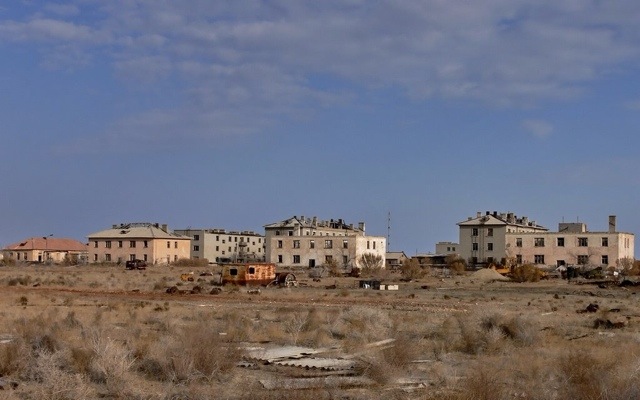
Nobody lives there as the ground is – probably quite rightly – seen as ‘polluted’. Occasionally groups of Uzbek or Kazakh nomads will visit the island in search of copper and other scrap metal that they can salvage from the decaying buildings, but other than that…the island is an unofficial ‘no-go zone’.
The real ‘nightmare fuel’ of this story is this: when Kantubek was abandoned and left to rot, so was the super-secret germ warfare facility at nearby Aralsk-7. In the apparent hurry to leave Vozrozhdeniya Island, many containers of lethal, genetically modified diseases were either smashed on the ground and abandoned, or were stored in inappropriate containers – which have now developed leaks. As a result, the island (which is dangerously close to becoming a peninsula due to the drop in water levels in the Aral Sea) is now seen as one of the most dangerous and polluted places on the face of the Earth. Don’t believe that the Soviets just smashed Petri dishes and test tubes full of lethal viruses? Don’t believe that anyone could be so soulcrushingly irresponsible? See below:
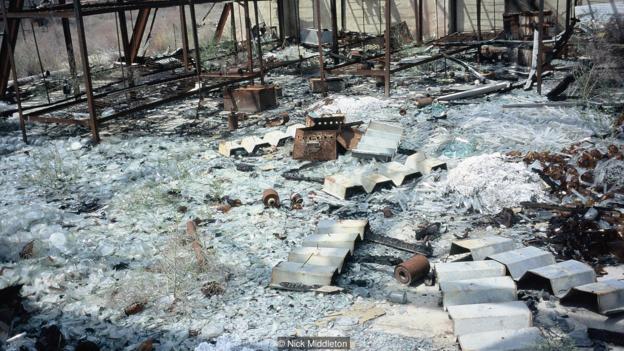
This is one of the many highly dangerous refuse areas on Vozrozhdeniya today. A team of photographers and journalists had to abandon their venture to the site after their ventilators became overloaded with chemical agents mere 15 minutes into the complex. It is thought that the toxins that remain at Vozrozhdeniya have been responsible for several bubonic plague outbreaks in the area as well as the mass death of Saiga antelope – 50,000 of which dropped dead one hour after grazing on the contaminated steppe land downwind.
Whilst the anthrax burial sites (inside which drums containing hundreds of tonnes of weaponised anthrax spores lay abandoned) on the island have now been officially decontaminated, the land is still considered to be highly dangerous. Nobody knows what else lurks beneath the soil, or may still linger in the air. We can but hope that all of the weaponised germs have been accounted for, as the consequences of a nihilist terrorist organisation such as ISIS obtaining these Soviet-era super-germs would be totally and utterly unthinkable.
“What’s the point in truth or beauty or knowledge when anthrax bombs are popping all around you?” – Aldous Huxley.

